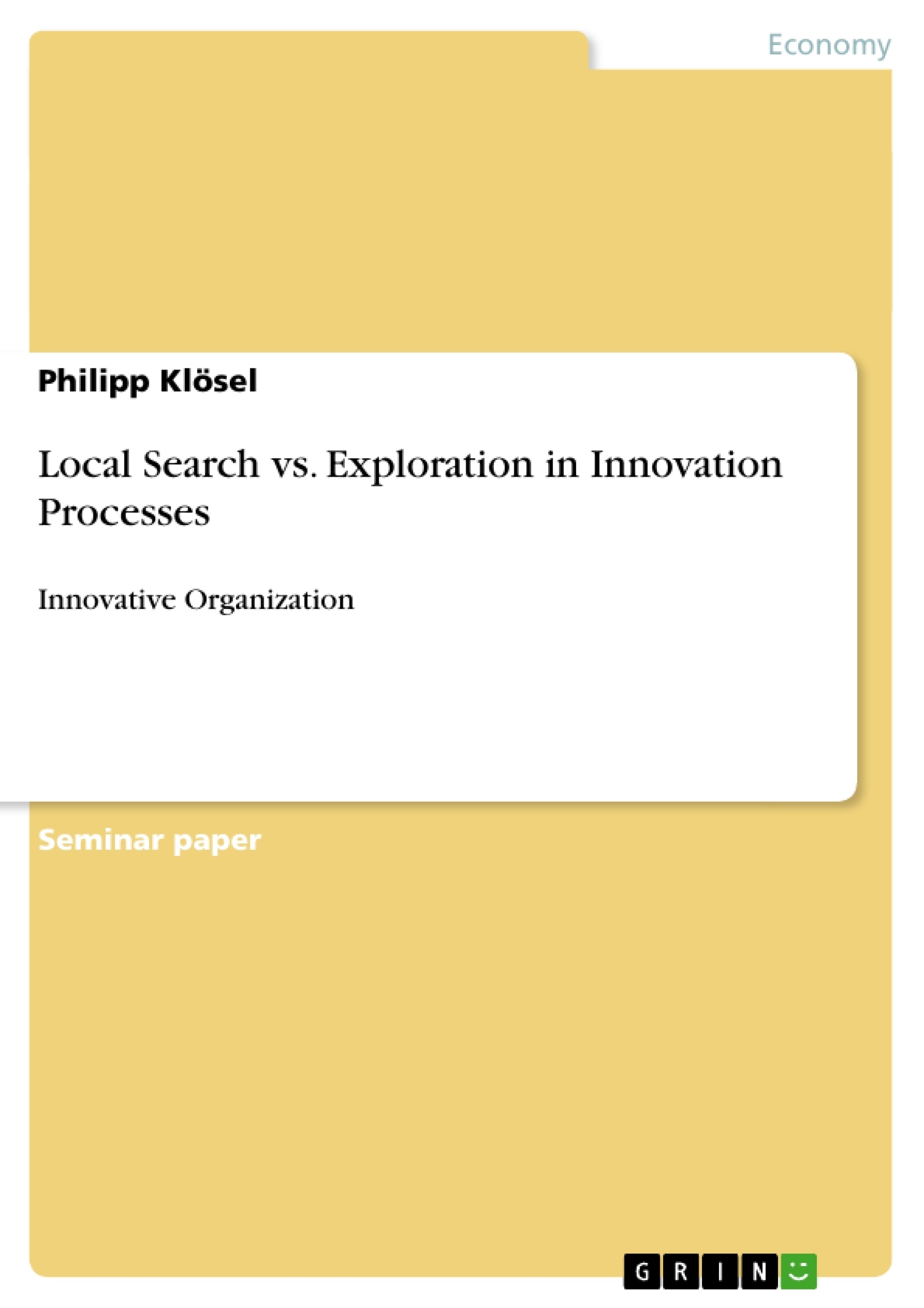Internationalization, shorter product life cycles and increasing complexity have lead to a situation in today’s world where organizations around the globe, on every level of the innovation process and in every industry, face increasing
competition. Especially affected by these characteristics are high-tech industries, which are often characterized through a high rate of product novelties, cutting edge technology and rapidly changing industry standards. Examples for hightechnology
industries that have been used in academic journal articles and that have been subject to empirical research are the robotic industry, the semiconductor industry and the optical disc industry. Especially in those industries organizations rely on constant and ongoing innovation to create and sustain competitive advantages and, therefore, to stay in business. Those
innovative companies that constantly innovate and that are characterized through a high level of entrepreneurship can also be illustrated as “knowledge-creating companies” or “learning organization”. But what makes them so innovative?
How do they choose an innovation style? How is innovation managed? My point in this paper will be that innovation management should be able to answerer the
following three questions:
“How?” Which innovation style is used
“When?” On which level of the innovation process is a style used
“Why?” Reason for the innovation style used on that level
These questions seem to be most important since Fagerberg states in the introduction of the Oxford Handbook of Innovation: “In spite of the large amount of research in this area during the past fifty years, we know much less about why and how innovation occurs than what it leads to.” Additionally, the question of
“when?” is added to conceptualize the innovation process into dependent innovation process levels that follow each other in a distinct order. To answerer these questions I will start with a general description of what innovation is, what exploration and exploitation are, I will describe the general setting in which organizations have to operate and what defines an innovative organization.
Inhaltsverzeichnis (Table of Contents)
- Introduction
- A. Description
- I. The setting/context
- II. Innovation
- III. The innovative organization
- IV. Exploitation /exploration
- B. Answering the questions
- I. "When?": Levels of the innovation process
- II. "How?": Exploration, Exploitation and Ambidexterity
- III. "Why?": Endogenous and the exogenous approach
- C. Decision making framework
- I. Dimension overview
- II. The framework
- Conclusion
- References
Zielsetzung und Themenschwerpunkte (Objectives and Key Themes)
This paper aims to address three key questions surrounding innovation management in organizations, particularly within the context of high-technology industries. These questions focus on how to choose an innovation style, when to implement it, and why specific choices are made within the innovation process. The paper seeks to provide a framework for understanding and navigating the complexities of innovation, exploring various theoretical approaches and practical considerations.
- Innovation Styles and Levels of the Innovation Process
- Exploration and Exploitation in Innovation
- Ambidexterity in Innovation Management
- Endogenous and Exogenous Influences on Innovation Choices
- Decision Making Framework for Innovation Styles
Zusammenfassung der Kapitel (Chapter Summaries)
The "Introduction" highlights the importance of innovation in a hypercompetitive environment, particularly in high-technology industries. It introduces the three key questions this paper aims to address: "How?" (choosing an innovation style), "When?" (implementing it at specific levels of the innovation process), and "Why?" (reasoning behind the choices). The paper emphasizes the need for a comprehensive framework to understand and manage innovation effectively.
The first section, "A. Description," provides a broader context by exploring the setting, defining innovation and innovative organizations, and introducing the concepts of exploration and exploitation in innovation.
The second section, "B. Answering the questions," delves deeper into the three key questions. "When?" examines different levels of the innovation process. "How?" investigates exploration, exploitation, and the concept of ambidexterity. "Why?" explores the influences of endogenous and exogenous factors on innovation choices.
The third section, "C. Decision making framework," presents a framework for choosing and implementing innovation styles, taking into account various dimensions and considerations.
Schlüsselwörter (Keywords)
This work focuses on the key concepts of innovation, exploration, exploitation, ambidexterity, endogenous and exogenous influences, innovation process levels, and decision-making frameworks within the context of organizational innovation, particularly in high-technology industries.
- Quote paper
- Philipp Klösel (Author), 2008, Local Search vs. Exploration in Innovation Processes, Munich, GRIN Verlag, https://www.grin.com/document/130291



